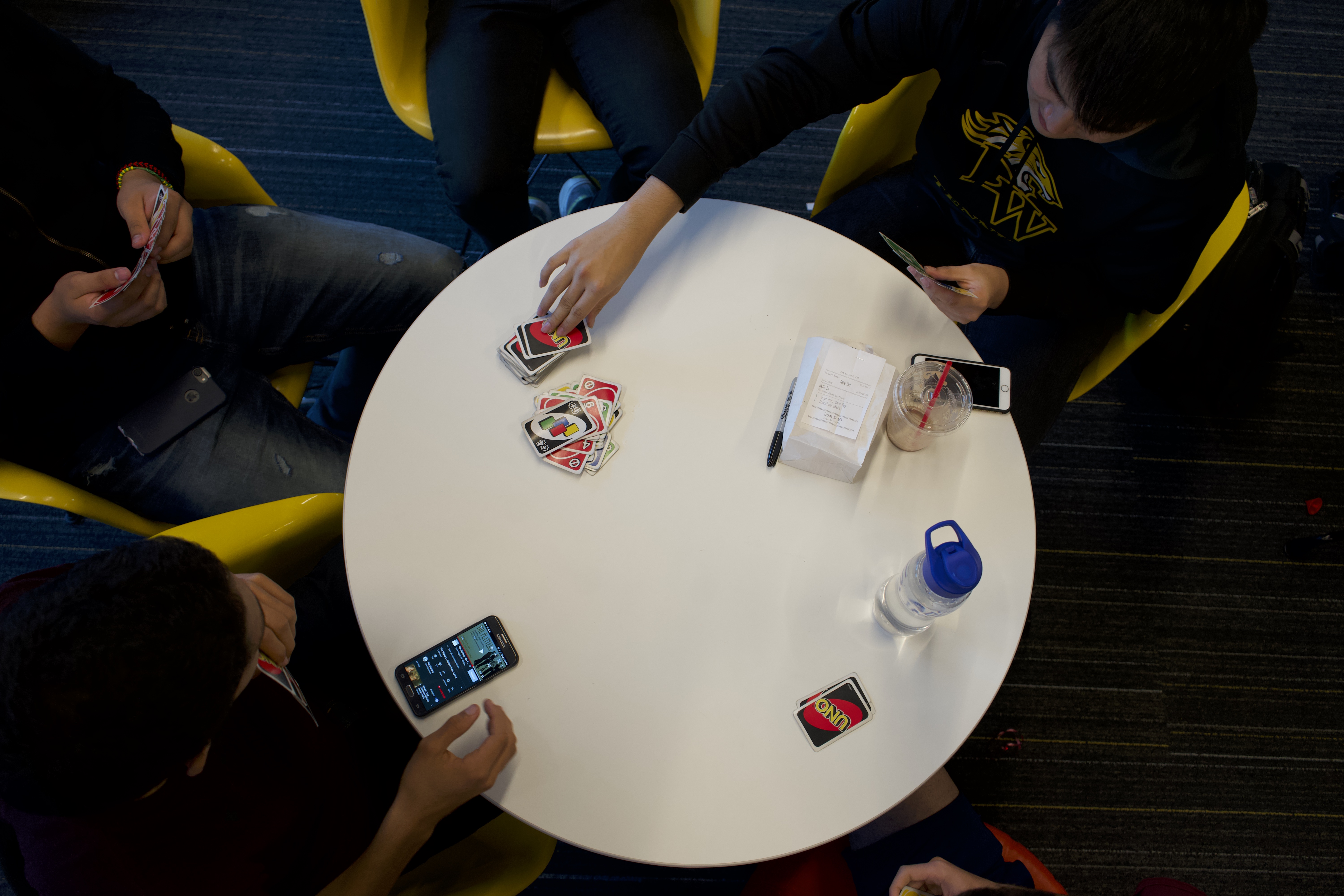As UNO cards are passed around the circular table in the Center, the usually calm, laid-back environment becomes tense with anticipation. The red, green, blue, and yellow cards are shelled out, and with each discard, the players fight fiercely for a coveted tally on the UNO scoreboard. An audience often crowds around the players, watching their every move to see who will be the next champion. This card game has evolved from an entertaining, stress-free activity into a serious competition of strategy. During tutorials, lunches, and free blocks, students flock to the Center to have a turn at playing UNO.
The vibe of UNO games at Lick is very edgy. Blayden Lee ’19 explains that “when you put down a draw four, you lose a friend.” For Cesar Salazar-Ramos ’19, the vibe of the game really “depends on who you are,” the strategies you use, and “what [cards] you place.” For some, UNO is an incredibly stressful game while for others, it is a welcome distraction.
In UNO, each player is dealt seven cards. The rest of the cards are stacked face down in a draw pile, from which players draw cards if they don’t have anything to put down. The top card on the draw pile is turned right side up and is the foundation for a discard pile. The first player must match either the color or number of that card. The second player does the same with the card placed down by the first player, and so on. In addition to number cards, players can also put down plus two cards (makes next person pick up two cards from the draw pile), wildcards (the player can choose what color the next person can put down), and plus draw four cards (next person has to draw four cards and the player can choose what color the next person plays). When someone only has one card left, they must yell UNO. If someone else in the game yells it before they do, the player has to draw two cards from the draw pile. The cycle goes on continually until someone has no cards left.
With the heightened competitiveness of UNO, different strategies need to be utilized. “Generally speaking, if you have a non-color specific power card, you generally want to keep that for last whether it is a plus four or just a regular wild card. If you have an option of keeping either a color specific power card or a number, you should probably keep the number for last because you have a higher probability of being able to play it,” Kiki Arenas ’19 said. Some students resort to cheating, but according to Arenas, it does not happen very often. Another issue Arenas finds when playing UNO is that “a lot of cards do not get shuffled” due to the fast-paced style Lick students prefer.
With so many students constantly playing UNO, there must be a reason it is so popular. Josiane Alpert-Sandler ’19 suggests that it may be because UNO is a great “way to get out our competitiveness and aggression.” Alpert-Sandler adds, UNO is played “in the Center, which is very student-accessible,” so often, she’s walking toward the exit, but “get[s] sucked into a game of UNO.” Salazar-Ramos loves UNO, explaining that it’s “just the vibe” that makes the game so interesting.
One of the major reasons UNO is so competitive is due to the highly prestigious and exclusive scoreboard. Currently, the top three players are Martin Mercy ’19, Salazar-Ramos, and Christie Lum ’19, all seniors. Mercy is in first with 115 wins. Salazar-Ramos is in second with a close score of 110 points. And in third place, is Lum with a score of 70. Behind these seniors are dozens of players vying for a spot in the top three. Time will tell who persists through the stresses of UNO.







